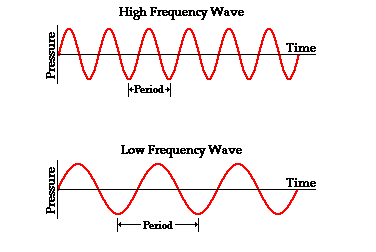Welcome to the corner of Audio-Visual geek’s
Today we will learn how to better communicate with the Sound Experts in the Audio-Visual sector. Are you a Videographer, podcaster or a film director? Then, you need to express your basic needs better for your audio professionals. You don’t need a long time to learn the basics.
Audio Vocabulary
Technical professions such as acoustic engineering, sound engineering, audio engineering, mixer, sound designer, audio equipment testing, musician etc. has a unique way to explain the forms of a sound to each other. Communication in today’s world is not only limited between person to person but also for your own production sector.
Let’s learn how some basic vocabulary works in sound expert’s world:
What is a Sound?
The Sound is a vibration in the air. Another way to say is an oscillating wave. To describe the meeting of sound with the air, we use the term onde. The ondes provoke a sensation in our ears.
- The more the place where the sound is dense and strict, sound travels faster. For example, in the air sound travels 340 meters, in water 1400 meters, inside the metal 5000 meters fast.
- The sound has 4 main elements. The sound experts generally talk about a distinct sound. Which is characterized by how pitch (in French it is more used frequency), intensity (loudness), timbre and developing over time. The Pitch is a precept of a sound and can only be measured subjectively. But frequency has a scientific identification.
What is a Frequency?
Regardless of the object, vibration creates a sound wave. The back-and-forth vibrational motion of the particles creates 2 main sounds. A narrow band of frequencies and wideband frequencies. The number of cycles that a vibrating object completes in one second is called frequency. The other word of the cycle is a vibration.
- The most commonly used unit for frequency is the Hertz (abbreviated Hz). 1 vibration per second is 1 Hz. People can hear sounds at frequencies from about 20 Hz to 20,000 Hz. This is the maximum hearing range for humans. But dogs, for example, can hear approximately 40 Hz to 60,000 Hz.

2. Sounds that pass the upper audible limit of human hearing of 20,000 Hz is called ultra-sounds. Lower than 20Hz is called infra-sounds. The more trebles frequency is increased, the more trebles move directionally. Between basses, mediums and trebles (In French Grave, Medium, Aigu) the basses go in every direction.
That’s why when neighbours complain about the noise, they complain about basses. Because we can prevent propagation of trebles but not basses.
What is a timbre?
Every instrument has its own voice (tone). The timbre of an instrument is made up of its unique vibrations. This uniqueness gives a personality to each instrument. Thanks to sound timbre we can differentiate the variation of tone qualities.
What is Intensity?
Intensity is a force that we use to play the instrument. The unity measure of Volume is decibels. The loudness of the sound is measured in decibels (dB).
There is no such a place like total silence on earth.
Just to give you an idea the desert has 0-10dB, sound studio has 10-20dB, missile rocket 180dB. If the sound doubles, it corresponds of 3dB of increase in its emission.
- Sound intensity level also known as acoustic intensity is defined as the power carried by sound waves per unit area in a direction perpendicular to that area. Sound intensity is the power per square meter. The common unit of power is the watt.
- Sound-level meter is the device for measuring the intensity of noise, music, and other sounds.
Why time matters?
The length or a duration of a concert depends on time. Especially if you need a specific music or a harmony in your orchestra it is vital to know when to terminate a sound. The unit of time in the audio-visual world is defined based on a second.
- In audio terms, the beginning of a sound is defined as an attack. So, the time that we put between the beginning of a sound and until it reaches its maximum is called an attack.
In order to become a great realisator (director), these basic concepts are your time-saving helpers. Having better Communication passes by learning how to use these vocabularies. The more you use the more you become a pro.
Main image: Pixabay


